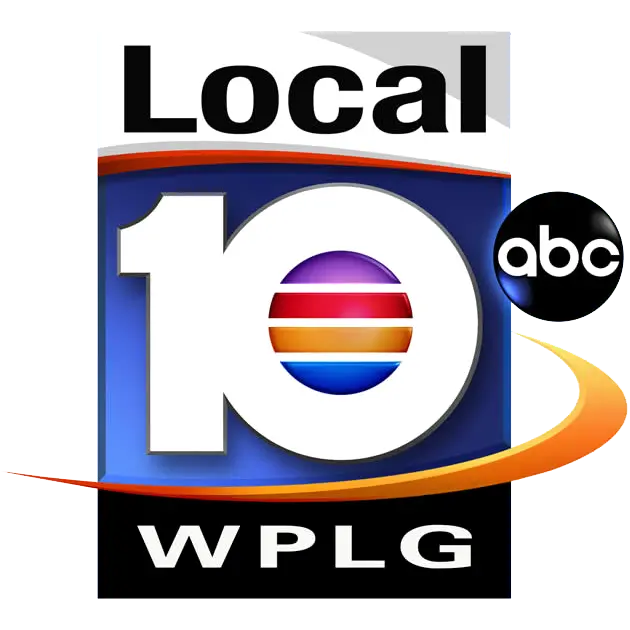















Lawyers: If you were injured in a car accident in West Palm Beach, the West Palm Beach Car Accident Lawyers at Madalon Law are more than willing to assist you in handling your case today. Experienced at dealing with every aspect of your car
there are several reports of elderly drivers falling asleep at the wheel, miscalculating or misjudging distances or
If you were in an auto accident in West Palm Beach and need to speak to a West Palm Beach Car Accident Lawyers, please contact the law firm of Madalon Law for your free consultation. We genuinely care about the difficulties and the challenges that lay ahead of you while you are recovering from your injury.
West Palm Beach is a lively city that attracts people from all over Florida, the United States, and the world. It’s known for its beautiful beaches and sunny weather. Whether you’re relaxing on the shore or exploring local attractions, the city offers something for everyone.
Clematis Street is a favorite among locals and visitors due to its retail outlets, restaurants, museums, and cultural hotspots. With its greenery, modern infrastructure, waterfront views, and rich lifestyle, West Palm Beach is truly a gem of South Florida.
However, the city’s growth naturally brings more people and traffic to the roads. As the population increases, so does the risk of car accidents. Sadly, traffic accidents are becoming more common in West Palm Beach. In the first three months of 2024 alone, 144 fatalities and 82 injuries occurred from car accidents in Palm Beach County.
These numbers remind us that the roads, even in paradise, can be dangerous.
Even in such a vibrant city, accidents can happen in the blink of an eye. A single second of distraction or reckless behavior can lead to serious consequences.
Being in a car accident can be nerve-wracking. The stress of dealing with injuries, medical bills, and insurance companies can be enormous. That’s why having legal support is so important.
At Madalon Law, we focus on helping car accident victims in West Palm Beach. We understand how accidents can impact your life. Our experienced West Palm Beach car accident lawyers are here to help you every step of the way. We fight for your rights so you can focus on healing and getting your life back on track.
In this blog, we’ll guide you through everything you need to know. From what to do after an accident to how Madalon Law can assist you, we’re here to support you. If you’ve been involved in an accident, you need to understand your legal options.
So, let’s get started.
Car accidents are unfortunately common in West Palm Beach. They range from minor bumps to severe collisions that can change lives. Knowing the types of accidents can help you stay alert and avoid dangerous situations.
Here are some of the most common types seen in the area:
Rear-End Collisions
These accidents are by far one of the most frequent types of accidents, not just in West Palm Beach, but across the country. Rear-end collisions occur when a car crashes into the back of another. They are common in high-traffic areas, especially at stoplights, intersections, and during heavy congestion. Many times, they occur because the driver in the rear is distracted, often by texting, talking on the phone, or checking a GPS.
Even though these accidents often occur at lower speeds, the impact can still be serious. One of the most common injuries from rear-end collisions is whiplash. This happens when the neck is jolted forward and backward violently as a result of impact.
Whiplash can lead to chronic neck and back pain, requiring months of physical therapy or medical treatment.
To avoid rear-end collisions, it’s important to maintain a safe following distance. Even a momentary lapse in attention can lead to serious consequences. That’s why drivers should always be aware of their surroundings, especially in stop-and-go traffic.
Side-Impact (T-Bone) Accidents
T-bones or side-impact accidents occur when the front part of a car slams into the side of another. These often happen at intersections, especially when a driver runs a red light or does not yield the right of way. T-bone accidents can also happen in parking lots when drivers aren’t paying attention or don’t check both directions before crossing an intersection.
Side-impact collisions can be very serious since the sides of vehicles have less structural protection compared to the front or rear. This means that if a T-bone accident happens, drivers and passengers are more vulnerable to serious injuries. Common injuries from these accidents include broken bones, head trauma, and internal injuries.
To reduce the risk of a T-bone collision, always approach intersections with caution, even when you have the right of way. Defensive driving techniques can go a long way in preventing accidents.
Sideswipe Accidents
Sideswipe accidents happen when two vehicles traveling in the same direction make contact, usually side-to-side. This can happen for several reasons, but the most common is when a driver fails to check their blind spots during a lane change or drifts out of their lane due to distraction or drowsiness. Sideswipes can range from minor scrapes to severe crashes, especially if they occur at high speeds on highways.
Even though sideswipe accidents might seem less severe than others, they can lead to loss of control of the vehicle. This can cause one or both cars to crash into other vehicles or barriers or rollover. Injuries can include bruises, cuts, and more severe ones, depending on the impact and speed at which the collision occurred.
To avoid sideswipe accidents, always double-check your blind spots before changing lanes and use your mirrors frequently to stay aware of your surroundings. Defensive driving is key, especially in heavy traffic or when sharing the road with large trucks.
Head-On Collisions
Head-on collisions are among the most deadly types of car accidents. They occur when the front of one vehicle crashes directly into the front of another, usually because one driver veers into oncoming traffic. These types of accidents are often the result of distracted driving, drunk driving, or fatigue.
Head-on collisions are more likely to occur on two-lane roads or rural highways, where there is little separation between opposing lanes of traffic.
The force of two vehicles colliding head-on at high speeds can result in catastrophic injuries. Victims often suffer from broken bones, traumatic brain injuries, spinal cord injuries, and in the worst cases, death. Even at lower speeds, head-on collisions can be extremely dangerous.
To avoid head-on collisions, drivers should remain alert, especially on narrow roads with oncoming traffic. Avoid distractions, and if you feel fatigued, it’s always safer to pull over and rest rather than risk falling asleep at the wheel.
Single-Vehicle Accidents
A single-vehicle accident involves only one car. These accidents can happen for a variety of reasons, including speeding, losing control of the vehicle, or encountering poor road conditions like wet or icy surfaces. Drivers may hit a tree, pole, or guardrail, or veer off the road altogether.
While there are no other cars involved in single-vehicle accidents, the driver and passengers can still suffer serious injuries. Factors such as inclement weather, mechanical failures, and sudden swerves to avoid obstacles can lead to single-vehicle crashes.
Preventing these types of accidents often involves slowing down, especially in poor weather conditions, and keeping your vehicle in good working order with regular maintenance.
Multi-Vehicle Pileups
Multi-vehicle accidents, also known as pileups, involve three or more cars and often happen on highways or in heavy traffic. A chain reaction can occur when one car stops suddenly, and the vehicles behind don’t have enough time to stop. These accidents are especially dangerous in bad weather conditions like rain, fog, or during rush hour when visibility and reaction times are compromised.
Multi-vehicle accidents are complex, as determining fault is challenging. The chances of injury are higher because more cars are involved, increasing the likelihood of serious damage and injury.
If you find yourself in a multi-car accident, it’s important to stay in your vehicle if possible, especially on busy highways, to avoid being hit by passing traffic.
Rollover Accidents
Rollover accidents happen when a vehicle flips over onto its side or roof. These accidents are particularly common with taller vehicles like SUVs, trucks, and vans, which have a higher center of gravity. Rollovers can happen when a vehicle takes a turn too quickly, hits a curb, or loses control at high speeds. These accidents are also more likely to occur during sudden swerves to avoid obstacles.
Rollover accidents are dangerous because they often lead to severe injuries or fatalities. Passengers who are not wearing seat belts are at a higher risk of being ejected from the vehicle during a rollover.
To reduce the risk of a rollover, it’s essential to slow down, especially when making sharp turns. Be mindful of your speed and road conditions, particularly when driving taller vehicles.
Hit-and-Run Accidents
A hit-and-run accident occurs when a driver involved in a crash leaves the scene without stopping to provide information or offer help. These accidents can happen anywhere, but they’re particularly common in busy areas like parking lots, intersections, and residential streets. The injuries from a hit-and-run can range from minor to severe, depending on the speed and type of collision.
Victims of hit-and-run accidents often face an uphill battle when it comes to seeking compensation for their injuries and damages. However, an experienced attorney can help track down the responsible party and explore options like uninsured motorist coverage.
If you are involved in a hit-and-run, try to gather as much information as possible about the fleeing vehicle. This includes their license plate number, make and model, or any distinctive features.
Parking Lot Accidents
Collisions in parking lots may seem minor, but they’re surprisingly common. These accidents typically happen when drivers are backing up, pulling into spots, or failing to notice pedestrians. Although these accidents tend to happen at lower speeds, they can still result in injuries and vehicle damage. Pedestrians and cyclists are particularly vulnerable in parking lot accidents.
Parking lot accidents are often caused by distracted driving, such as drivers focusing on finding a spot rather than watching their surroundings.
To avoid these accidents, always drive slowly in parking lots and be on the lookout for pedestrians, especially children, who can be difficult to see.
Reckless Driving
Reckless driving involves behavior that shows a blatant disregard for the safety of others. This can include speeding, tailgating, running red lights, or weaving in and out of traffic. Reckless driving often results in severe accidents because the driver isn’t following the rules of the road and is putting others at serious risk.
Reckless driving accidents tend to cause more damage and result in more severe injuries. Victims of these accidents often have legal grounds to pursue compensation for their injuries, as reckless driving is a clear form of negligence.
Drunk Driving or Driving Under the Influence (DUI)
Drunk driving remains a leading cause of accidents in West Palm Beach. Drivers under the influence of alcohol or drugs have impaired reaction times and poor judgment. This often leads to crashes, especially late at night or during holidays.
DUI accidents are incredibly dangerous, frequently resulting in severe injuries or fatalities. In Florida, drivers with a blood alcohol content (BAC) of 0.08% or higher are considered intoxicated.
Florida enforces strict penalties for DUI offenses, including heavy fines, license suspension, and even jail time. If a DUI results in an accident, the consequences become even more severe, often leading to felony charges, especially if someone is seriously injured or killed. These accidents not only affect the driver but can also leave lasting trauma on victims and their families.
Fatigued Driving
Driving while fatigued is just as dangerous as driving under the influence. When a driver is tired, their reaction time slows, and they may even fall asleep at the wheel. Fatigued driving often occurs during long road trips, late at night, or after long shifts at work. Fatigued drivers are prone to drifting out of their lanes, missing traffic signals, and causing serious accidents.
If you feel tired while driving, it’s better to pull over and rest. Even a quick nap can help you avoid the dangers of driving while drowsy.
Road Rage
Road rage occurs when a driver becomes aggressively angry and engages in dangerous behaviors on the road. This can include tailgating, cutting off other drivers, or even causing a crash on purpose. Road rage incidents are often fueled by stress, impatience, or frustration, but the consequences can be life-threatening.
It’s important to stay calm and avoid engaging with aggressive drivers. If you encounter a road rage incident, it’s safer to pull over or call the authorities than to escalate the situation.
Vehicle Defects
Some car accidents are caused by defects in the vehicle itself. This could be due to faulty brakes, defective airbags, or tire blowouts. When a vehicle defect leads to an accident, it may not be the driver’s fault. In such cases, the manufacturer may be held liable for the damages and injuries caused.
Vehicle defects can be difficult to detect, which is why regular maintenance and paying attention to recall notices are essential for your safety.
By understanding these common types of auto accidents, you can be more cautious and aware while driving. However, if you find yourself involved in a crash, having the right legal support is critical. At Madalon Law, we specialize in helping accident victims in West Palm Beach. Our team of skilled West Palm Beach auto accident attorneys is ready to fight for your rights and help you get just and deserved compensation.
Car accidents can cause a wide range of injuries, depending on the severity of the crash, the speed at which it occurred, and the safety measures in place, such as seatbelts and airbags. Injuries can vary from minor cuts and bruises to life-threatening conditions.
Here’s a detailed look at some of the most frequent injuries caused by car accidents:
Whiplash
Whiplash is one of the most common injuries people experience after a car accident, particularly in rear-end collisions. It occurs when the neck is violently jolted back and forth, much like the cracking of a whip. This sudden movement can strain or tear the muscles, tendons, and ligaments in the neck, leading to pain, stiffness, and reduced range of motion.
The symptoms of whiplash may not appear immediately. It’s common for people to feel fine right after the accident, only to experience neck pain and discomfort hours or even days later. Other symptoms can include headaches, dizziness, and difficulty concentrating.
While whiplash is often considered a minor injury, it can lead to chronic pain if left untreated. Physical therapy, chiropractic care, and pain management techniques are often used to treat this condition.
Concussions and Traumatic Brain Injuries (TBI)
Head injuries are another frequent outcome of car accidents, especially in more severe crashes. Even with airbags and seatbelts, the impact of a collision can cause the head to hit the steering wheel, dashboard, window, or other parts of the vehicle. This can lead to concussions or more serious traumatic brain injuries (TBI).
A concussion occurs when the brain is jolted inside the skull, which can disrupt normal brain function. Symptoms of a concussion include headaches, dizziness, confusion, blurred vision, memory problems, and nausea. In some cases, concussions can result in long-term cognitive issues.
More severe TBIs can cause permanent damage and may lead to loss of motor functions, changes in personality, and even coma or death. It’s important to seek immediate medical attention if you suspect a concussion or TBI after a car accident. Prompt treatment is vital to prevent long-term damage.
Broken Bones
The force of a car accident can easily cause bones to break, especially in high-speed crashes or head-on collisions. The most commonly broken bones in car accidents include the arms, legs, ribs, collarbone, and pelvis. These fractures can range from minor hairline fractures to more serious compound fractures, where the bone breaks through the skin.
Patients will need to be immobilized with casts or splints and may need surgery to properly heal. In severe cases, long-term physical therapy may be necessary to regain full mobility and strength. Ribs are particularly vulnerable in accidents, as they can be broken by the force of the seatbelt or from being thrown against the steering wheel or dashboard. Rib fractures can be very painful and take a long time to heal because it’s difficult to immobilize the ribcage.
Spinal Cord Injuries
Spinal cord injuries are some of the most serious and life-altering consequences of car accidents. The spinal cord is responsible for transmitting signals between the brain and the rest of the body. When it’s damaged, it can lead to partial or complete paralysis, depending on the severity and location of the injury.
Injuries to the spinal cord can occur in various parts of the back, including the cervical (neck), thoracic (upper back), and lumbar (lower back) regions. Paralysis may affect only certain parts of the body, or it may result in total paralysis from the neck down. Spinal cord injuries often require extensive medical treatment, rehabilitation, and long-term care.
In less severe cases, victims may experience herniated or slipped discs, which occur when the soft material between the vertebrae in the spine is displaced. This can cause a lot of pain and may require surgery, physical therapy, or other interventions.
Internal Injuries
Internal injuries can be some of the most dangerous and difficult to detect after a car accident. The impact of a crash can cause damage to internal organs such as the liver, kidneys, spleen, or lungs. These injuries can lead to internal bleeding, which can be life-threatening if not treated quickly.
Common signs of internal injuries include severe pain, swelling, dizziness, or loss of consciousness. However, because internal injuries are not always immediately apparent, it’s important to seek medical attention after an accident, even if you feel fine at first. Doctors may perform imaging tests such as X-rays or CT scans to check for internal damage.
One of the most serious internal injuries is a collapsed lung, also known as a pneumothorax. This can occur when a rib is broken and punctures the lung, leading to difficulty breathing and chest pain. Internal bleeding and organ damage often require emergency surgery and can lead to long-term health complications.
Soft Tissue Injuries
Soft tissue injuries refer to damage to the muscles, ligaments, and tendons throughout the body. These injuries are common in car accidents because the sudden impact can cause the body to move in unnatural ways, leading to strains, sprains, and tears.
Whiplash is technically a type of soft tissue injury, but other areas of the body can also be affected, including the shoulders, knees, and back. Symptoms of soft tissue injuries include pain, swelling, bruising, and difficulty moving the affected area.
While soft tissue injuries may not seem as serious as broken bones or head injuries, they can cause a lot of discomfort and may take weeks or months to heal. Physical therapy is often recommended to help strengthen the muscles and improve mobility after a soft tissue injury.
Cuts and Lacerations
Cuts and lacerations are common in car accidents, particularly when glass or metal shatters upon impact. The force of the crash can cause windows to break, or parts of the car may crumple, creating sharp edges. Passengers may also be injured by loose objects in the vehicle that are thrown around during the collision.
Some cuts and lacerations may only require stitches, but deeper wounds can lead to more severe damage, including muscle or nerve injuries. In extreme cases, individuals may suffer from disfigurement or scarring. It’s important to clean and dress wounds promptly to avoid infection, which can complicate the healing process.
Burn Injuries
Burn injuries can occur in car accidents, especially if the vehicle catches fire or if hot liquids like gasoline or oil are spilled during the crash. Burn injuries are classified based on their severity, ranging from first-degree burns (mild) to third-degree burns (severe, affecting deeper layers of tissue).
Severe burns can cause long-term damage, including scarring, nerve damage, and infection. Treatment for burns may include skin grafts, reconstructive surgery, and rehabilitation. Burn victims often face a long and painful recovery process, with the potential for lasting physical and emotional scars.
Psychological Injuries
While physical injuries are often the most visible result of a car accident, the psychological impact can be just as serious. Many accident victims suffer from emotional trauma, anxiety, depression, or post-traumatic stress disorder (PTSD) following a serious crash. The mental health effects of a car accident can linger for months or years, affecting a person’s ability to work, maintain relationships, or enjoy life.
Symptoms of PTSD may include flashbacks, nightmares, panic attacks, and an intense fear of driving or riding in a car. In some cases, individuals may need counseling or therapy to overcome the psychological effects of the accident.
Addressing psychological injuries is just as important as treating physical ones. Mental health support, whether through therapy, counseling, or support groups, plays a big role in a person’s recovery.
Understanding Florida Highway Safety and Motor Vehicles laws is essential, especially if you’re involved in a collision. Florida has its own unique set of rules that dictate how injuries are compensated, how liability is determined, and what steps you need to take after an accident. One of the most important laws in this state is the Personal Injury Protection (PIP) law.
Florida operates under a no-fault car insurance law. This means that regardless of who caused the car accident, your own insurance will cover a portion of your medical bills and other expenses through Personal Injury Protection (PIP).
Let’s take a look at how PIP law works:
1. PIP Coverage Requirements
In Florida, all drivers are required to carry a minimum of $10,000 in PIP insurance. This coverage helps pay for medical expenses, lost wages, and certain other costs following a car accident, regardless of who was at fault.
PIP typically covers:
2. 14-Day Rule for Medical Treatment
One important aspect of the PIP law is that you must seek medical treatment within 14 days of the accident. If you don’t, you risk losing your PIP benefits entirely. This means that even if you feel fine immediately after the crash, you need to see a doctor as soon as possible to document any potential injuries.
3. PIP Coverage Limitations
While PIP covers medical bills and lost wages, it has its limitations. In most cases, it only provides up to $10,000 in benefits. If your injuries are more severe and your medical bills exceed this amount, you may need to pursue additional compensation. You can do this through a personal injury lawsuit or a claim against the negligent or at-fault driver’s insurance.
4. Serious Injury Threshold
Florida’s PIP law also includes a “serious injury threshold.” This means that you can only file a lawsuit against the at-fault driver if your injuries meet certain criteria. For example, you can pursue legal action if your injury is:
If your injuries fall below this threshold, your damages recovery will be limited through your PIP insurance. You may also not be able to sue the other driver for pain and suffering.
Being involved in a car accident can be overwhelming and frightening. However, knowing the right actions to take after a crash can make a major difference in your ability to recover physically, emotionally, and financially. Here’s a detailed guide on what to do after a car accident in West Palm Beach:
1. Check for Injuries
Your immediate priority after a car accident should be safety. Check yourself and others involved for injuries. If anyone is hurt, call 911 right away to get medical assistance.
Even if injuries seem minor, it’s important to get checked out. Some injuries, like whiplash or internal trauma, might not be immediately obvious.
2. Move Your Car to a Safe Area
If the accident is minor and your vehicle is still drivable, move it out of the way of traffic to prevent further incidents. However, if the vehicle is not drivable or someone is seriously injured, leave it where it is and wait for emergency responders.
3. Call 911
In Florida, you are legally required to report a car accident if it results in injuries, death, or significant property damage. Calling the police ensures that the accident is properly documented. The police will arrive, assess the scene, and create a report. This report will be critical later if you need to file an insurance claim or pursue legal action.
4. Exchange Information
While waiting for the police, exchange information with the other driver(s) involved. Make sure to get the following:
It’s also helpful to take note of the location, time, and any other details about the scene. Avoid discussing fault or blaming the other driver. Simply exchange information and wait for the authorities.
5. Document the Scene
Gathering evidence is important for any future claims. Take as many photos of the accident scene as you can, including damage to the vehicles, skid marks, traffic signs, and road conditions.
If you have sustained visible injuries, document those as well. Look for any nearby surveillance cameras or witnesses who might have seen what happened. Get witness statements and contact details if possible.
6. Get a Medical Check-up
Even if you don’t feel hurt right after the accident, seeing a doctor as soon as possible is important. Some injuries, like soft tissue damage or concussion, might not show immediate symptoms but could worsen over time.
A medical evaluation also creates an official record of your injuries. This can be important if you decide to file a car accident claim later.
7. Notify Your Insurance Company
Contact your insurance provider to report the accident, even if it wasn’t your fault. Provide them with the necessary information, including the police report number, details of the other driver, and any evidence you gathered. Many insurance policies require you to notify them promptly, so it’s best not to delay.
8. Avoid Admitting Fault
When talking to the other driver, the police, or your insurance company, avoid admitting fault or making any statements that could be interpreted as taking blame for the accident. Fault will be determined by the police report, insurance investigation, and sometimes legal proceedings. Even a casual comment like “I didn’t see you” can be used against you.
9. Keep Track of All Documents
After the accident, keep track of all related documents. This includes medical bills, car repair estimates, receipts, and records of time missed from work due to injuries. These will be important if you pursue a personal injury claim or have to prove the financial impact of the accident.
10. Consult an Experienced Car Accident Lawyer
If the accident resulted in injuries, significant property damage, or legal complexities, it’s wise to consult a West Palm Beach auto accident attorney. A qualified attorney can help you understand the legal system, deal with insurance companies, and ensure you get just compensation. They can also assist if the other party is trying to place blame on you or if the insurance company is refusing to pay a fair settlement.
11. Follow Through with Treatment
If you sustained injuries in the accident, make sure to follow through with all prescribed medical treatment and rehabilitation. Skipping appointments or stopping treatment early can harm your health and weaken your case if you file a claim. Insurance companies may argue that your injuries are not as serious as claimed if you don’t complete your treatment plan.
12. Understand Florida’s No-Fault Law
Florida is a no-fault state, which means your own insurance pays for your medical bills and certain other expenses, regardless of who was at fault. However, if your injuries are severe, you may be able to step outside of the no-fault system and file a lawsuit against the at-fault driver. This is where having an experienced attorney can make a difference.
Proving who was responsible for your car accident in West Palm Beach is essential to getting compensation for your damages. Florida follows a “comparative negligence” system, meaning both parties involved in an accident can share the fault. To prove the other party’s responsibility, you need to gather evidence and demonstrate negligence.
Here’s how you can determine and prove negligence following a car accident:
1. Understanding Negligence in Car Accidents
Negligence occurs when someone fails to act with reasonable care, leading to harm or damage. In car accidents, proving negligence means showing that the other party failed to follow traffic laws or didn’t act responsibly behind the wheel.
The four main elements of negligence include:
2. Gathering Evidence at the Scene
Collecting evidence at the scene of the accident is a critical step in proving fault. Here’s what you should gather:
3. Analyzing Traffic Laws
Florida traffic laws play a key role in determining who is at fault. If the other driver violated any laws, such as running a red light, speeding, or failing to yield, it can help establish their responsibility for the accident.
4. Witness Testimony
As mentioned earlier, witness testimony can be a key factor in determining fault. Independent witnesses who saw the crash can provide unbiased accounts of what happened. They can describe the events leading up to the crash, how the other driver behaved, and whether they saw any dangerous or reckless actions.
5. Accident Reconstruction Experts
In some complex cases, you might need the help of an accident reconstruction expert. These professionals use data like skid marks, vehicle damage, and road conditions to recreate the accident. Their analysis can determine speed, impact angles, and other factors that help clarify how the crash happened and who was at fault.
6. Black Box Data
Many modern vehicles are equipped with event data recorders, commonly known as “black boxes.” These devices can record valuable information, such as the vehicle’s speed, braking, and steering activity right before the crash. If you have access to this data, it can support your claim by showing the actions of the other driver in the moments leading up to the accident.
7. Medical Records
If you’ve been injured, your medical records can also support your case. These records prove that the accident caused physical harm and help to show how extensive your injuries are. The severity of the injuries may also indicate the level of impact during the crash. This can help support your claim of negligence against the other driver.
8. Consult an Experienced West Palm Beach Car Accident Lawyer
If proving fault becomes difficult, a car accident lawyer in West Palm Beach can help. They will gather the necessary evidence, speak to witnesses, and use legal strategies to build a compelling case for you.
Lawyers are skilled at negotiating with insurance companies and fighting for fair compensation. They will also guide you through Florida’s comparative negligence system, where the percentage of fault affects your recovery. A skilled lawyer will work to minimize your liability and maximize your compensation.
9. Florida’s Comparative Negligence Law
As mentioned, Florida follows a modified comparative negligence rule. This means that even if you’re partially at fault for the accident, you can still recover damages. However, the amount you can recover will be reduced by your percentage of fault. For instance, if you’re found to be 30% at fault and your total damages are $100,000, you would receive $70,000.
Understanding how fault is determined under this law is important because the other party’s insurers may try to claim you share the blame. Having legal representation can help you fight unfair accusations and get the settlement you deserve.
Proving who was responsible for your West Palm Beach car accident requires careful documentation and an understanding of Florida traffic laws. Gather as much evidence as possible at the scene, rely on expert testimony when needed, and consult a skilled car accident attorney. With the right approach, you can establish negligence, protect your rights, and secure compensation for injuries and damages.
Following a car accident, there are various types of compensation you may have the right to, depending on the circumstances of your case. These damages are meant to help cover the financial, physical, and emotional burdens caused by the accident. Here’s a lowdown on the types of damages you can seek:
Medical Bills
You can recover compensation for ongoing and anticipated medical costs that relate to your injuries. This includes hospitalization, surgeries, medication, physical therapy, and any other treatments you need to recover.
Lost Wages
If your injuries prevent you from working, you can seek compensation for any wages you have lost. This includes the earnings you’ve already lost during recovery and any future wages you may miss if your injuries prevent you from returning to work or working in the same capacity.
Vehicle Repair Costs
You can also claim compensation for the costs associated with repairing or replacing your vehicle. This includes any rental car expenses while your vehicle is being repaired.
Pain and Suffering
Pain and suffering compensation is intended to cover the physical pain and emotional trauma that results from the accident. This type of compensation can vary based on the severity of your injuries and how they impact your daily life.
Loss of Consortium
If your injuries affect your relationship with your spouse, you may be eligible to damages for loss of consortium. This refers to the loss of companionship, affection, or the ability to maintain a healthy marital relationship.
Loss of Companionship
In severe cases, where a loved one is killed in an accident, family members may seek compensation for the loss of companionship. This type of damage is meant to address the emotional toll that losing a close family member can have on the family left behind.
Loss of Support
If a family member who was financially supporting you is killed in an accident, you can seek compensation for losing that financial support. This can include wages and benefits that would have been provided if the loved one had survived.
Funeral Expenses
In cases where a car accident results in a wrongful death, the victim’s family may recover compensation for funeral and burial expenses. This helps ease the financial burden during a difficult time.
Punitive Damages
In some cases, if the other driver’s actions were particularly reckless or egregious, you may be given punitive damages. These are meant to penalize the driver at fault and discourage similar actions in the future.
These damages are less common but can greatly increase the compensation amount if awarded.
It’s essential to consult a car accident lawyer to understand all the compensation you’re entitled to. Each case is different, and an attorney will guide you through it so that you may receive the maximum possible settlement.
How Much Time Do I Have to File a Lawsuit After a Car Accident?
In Florida, the statute of limitations for filing a car accident lawsuit is typically two years following the accident. However, there can be exceptions, so it’s important to consult with a lawyer as soon as possible to ensure you don’t miss this critical deadline.
Should I Speak with the Other Driver’s Insurance Company?
It’s generally not a good idea to speak with the other driver’s insurance company without legal advice. Their goal is to minimize their payout. It’s safer to let your attorney handle all communication with them to avoid giving statements that could hurt your case.
How Soon Should I Hire a Lawyer After a Car Accident?
It’s best to hire a lawyer as soon as possible after a car accident. Early legal representation ensures that important evidence is preserved, witnesses are interviewed while their memories are fresh, and all necessary steps are taken to build a strong case for compensation.
What Should I Tell the Police After a Car Accident?
When speaking to the police, stick to the facts. Avoid speculating about fault or offering opinions. Provide accurate details about what happened, but do not admit guilt or responsibility. The police report will be a key piece of evidence in your case.
What If I’m Blamed for My Car Accident?
If you’re blamed for your car accident, don’t panic. Florida follows a modified comparative negligence system. This means even if you share some fault, you can still get recompense. However, your compensation will be reduced by the percentage of your fault.
For example, if you’re 20% at fault, your compensation will be reduced by 20%. Our skilled car accident lawyers in West Palm Beach can help investigate your case, gather evidence, and work to reduce the amount of blame placed on you.
What Are the Chances That My Car Accident Case Will Go to Trial?
Most car accident cases settle before going to trial. In fact, about 95% of personal injury cases, including car accidents, are resolved this way. However, some factors can affect whether your case goes to trial:
In short, while most cases settle, having a lawyer prepared to take your case to trial can make it easier to get a fair settlement.
When Should I Hire a Car Accident Lawyer in West Palm Beach, FL?
It’s important to hire a West Palm Beach auto accident lawyer right after an accident, especially in these cases:
How Do Car Accident Lawyers Charge for Their Services?
Most car accident lawyers work on a contingency fee basis, meaning they only get paid if they win your case. This means there are no upfront costs. Their fee is usually a percentage of the settlement or verdict amount.
If you’ve been in a car accident in West Palm Beach, hiring an attorney from Madalon Law can make a big difference in the outcome of your case. Car accidents can be stressful, and dealing with insurance companies, medical bills, and legal procedures is overwhelming, especially if you’re injured.
Madalon Law’s experienced personal injury attorneys will not only fight for your rights but also guide you through every step of the legal process. Here’s how a West Palm Beach car accident attorney from Madalon Law can help:
Investigating the Accident
One of the first steps an attorney will take is to thoroughly investigate the accident. They will collect evidence to build a strong case, including:
This evidence helps prove who was at fault and supports your claim for damages.
Determining Liability
Determining who is at fault in a car accident is often complicated, especially when multiple vehicles or factors are involved. Your attorney will carefully review the evidence and traffic laws to identify the liable party or parties. Florida follows a modified comparative negligence system, which means fault can be shared. Even if you are partially at fault, an attorney will work to minimize your liability and maximize your compensation.
They will also ensure that all parties involved are held accountable, including reckless drivers, negligent vehicle repair shops, or car manufacturers with defective parts.
Handling Insurance Companies
Dealing with insurance companies is one of the most frustrating parts of a car accident case. Insurance adjusters are focused on minimizing payouts, and they often pressure accident victims into accepting lowball settlements. When you hire Madalon Law, your attorney will handle all communication with insurance companies. They will:
By letting your attorney handle these negotiations, you can avoid common mistakes and focus on your recovery.
Calculating Damages
An experienced car accident attorney understands the full scope of damages you qualify for. Madalon Law will help you calculate all of your losses, not just immediate costs. This includes:
They will make sure that you seek the full value of your claim, covering both the obvious and less apparent damages.
Negotiating Settlements
Most car accident cases are settled out of court. An attorney from Madalon Law will negotiate directly with the insurance companies to reach a fair settlement. They know the tactics insurers use to delay or deny claims, and they will not settle for less than what you deserve.
If the settlement offers are too low or unreasonable, they will take the case to trial if necessary. Your attorney will advise you on whether a settlement is in your best interest or if you should continue to pursue the case in court.
Filing a Lawsuit and Representing You in Court
If the insurance company refuses to offer a fair settlement, your attorney will file a lawsuit on your behalf. Going to court can be unnerving, but with Madalon Law by your side, you won’t have to face it alone. They will:
Having a seasoned trial attorney from Madalon Law increases your chances of receiving a favorable verdict.
Explaining Florida’s Car Accident Laws
Understanding Florida’s car accident laws can be confusing. Florida is a no-fault state, meaning your own insurance pays for some of your medical bills and lost wages, regardless of who was at fault. However, if your injuries are serious enough to exceed what your personal injury protection (PIP) insurance covers, you may be able to sue the at-fault driver.
An attorney will explain how Florida’s PIP law, comparative negligence, and other relevant statutes apply to your case. They will ensure that your claim meets the legal standards and deadlines to avoid complications.
Providing Emotional Support
Suffering from a car accident isn’t just physically painful—it’s emotionally draining. The legal process can feel daunting, especially when you’re trying to recover. Your attorney from Madalon Law will offer support, compassion, and regular updates throughout your case. Knowing that a professional is handling the legal aspects allows you to focus on healing.
How Madalon Law Can Help You Today
At Madalon Law, we offer more than just legal representation—we offer support when you need it most. We work on a ‘no win, no fee’ basis. This means you won’t owe us anything unless we successfully resolve your case in your favor.
Our West Palm Beach car accident lawyers also provide free consultations, so you can discuss your situation and get legal guidance without any upfront costs. We understand that recovering from an accident can be difficult, which is why we also offer home and hospital visits to accommodate your needs.
Let our West Palm Beach car accident lawyers handle the legal battle while you focus on healing. Contact Madalon Law today to get started on your path to justice and fair compensation!